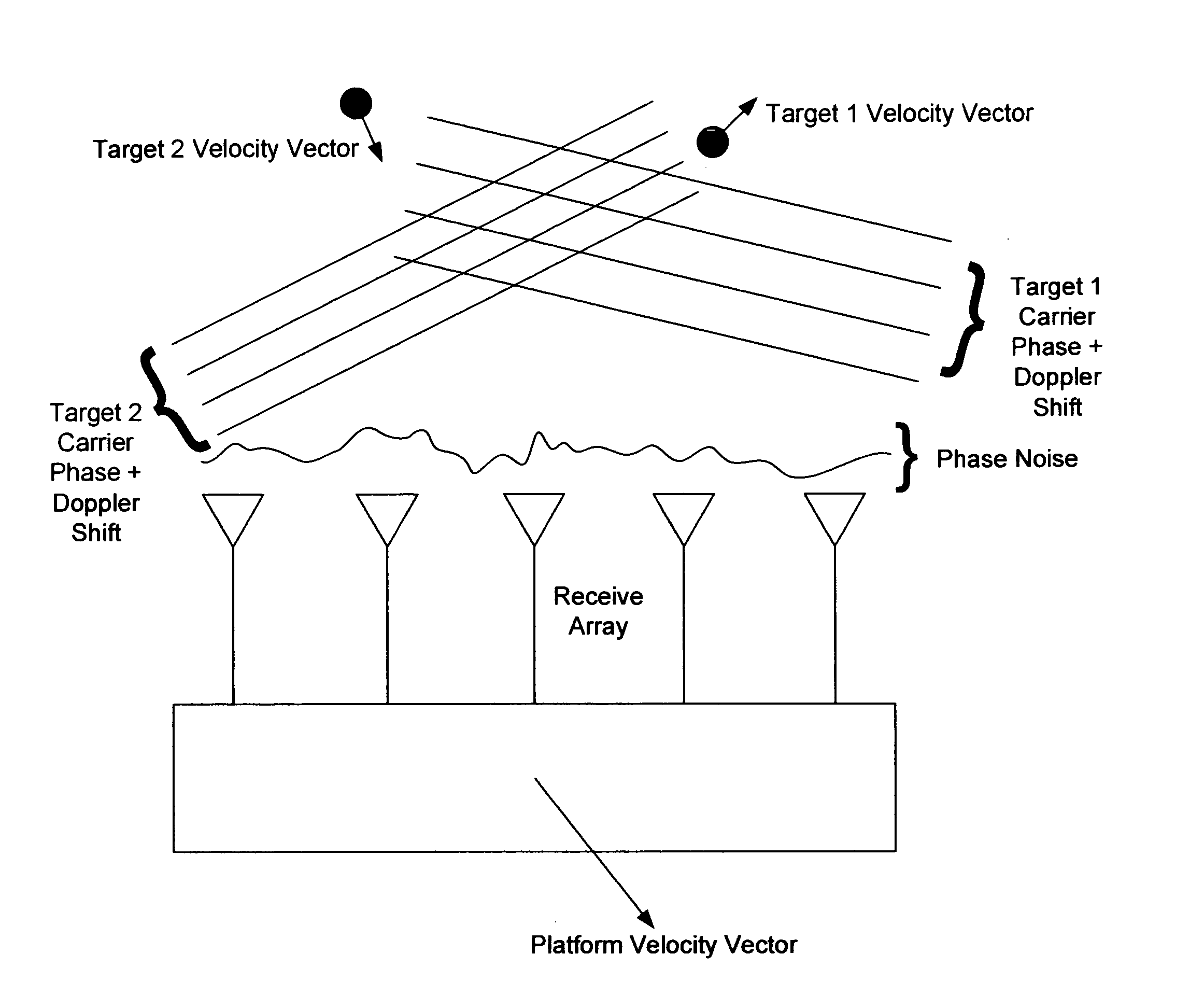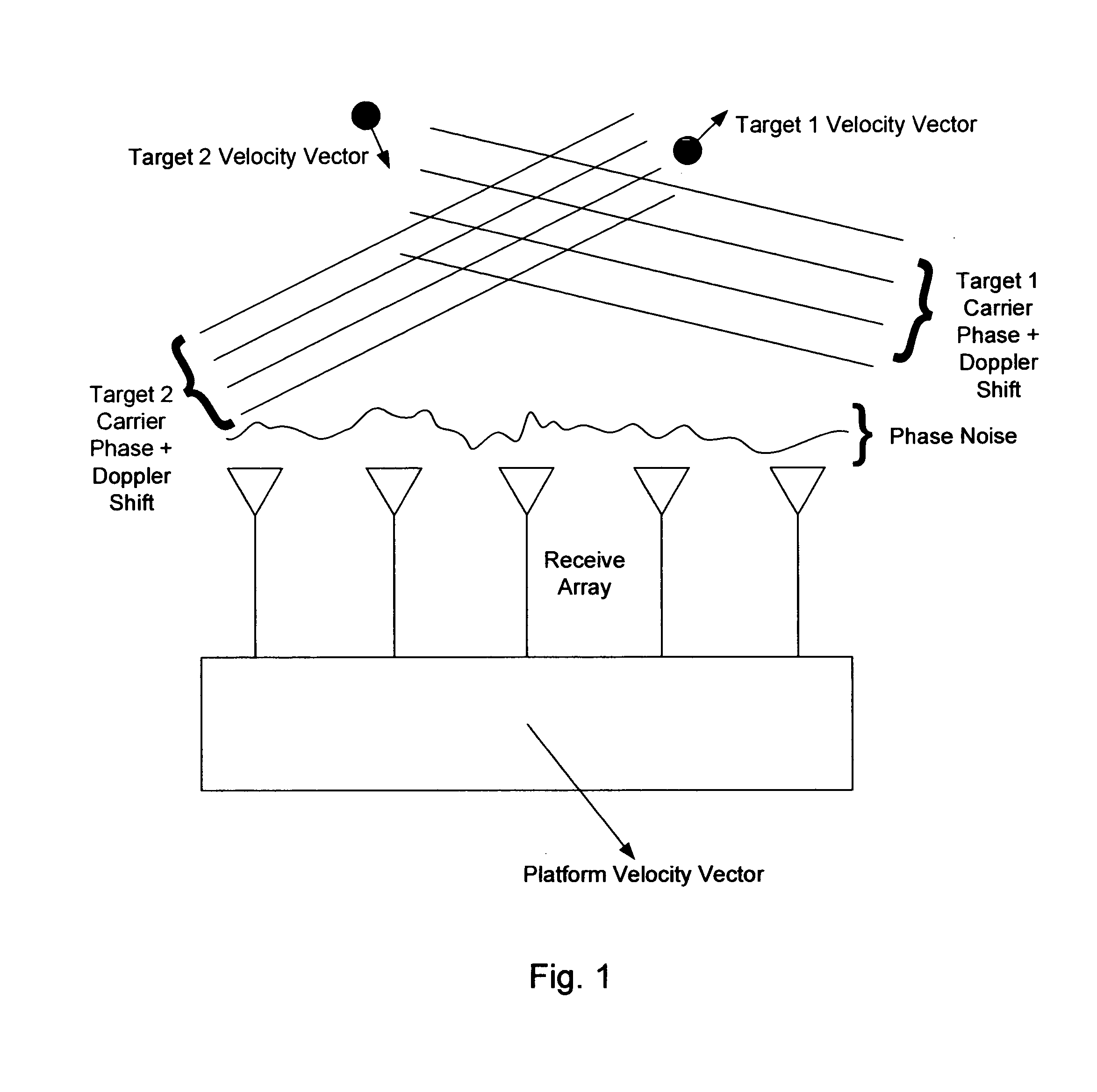Phased arrays exploiting geometry phase and methods of creating such arrays
a technology of phased arrays and geometry, applied in direction finders using radio waves, multi-channel direction-finding systems using radio waves, instruments, etc., can solve the problems of large physical footprint of arrays, severe beam distortion over frequency, and process of beamforming over substantial bandwidths, so as to achieve the effect of reducing the coupling of array elements
- Summary
- Abstract
- Description
- Claims
- Application Information
AI Technical Summary
Benefits of technology
Problems solved by technology
Method used
Image
Examples
Embodiment Construction
A) Phenomenology
[0085] A description of the underlying phenomenology upon which the present invention is based will be given first in the context of radio frequency (RF) array receivers. Departures from the RF phenomenology in the domain of optics and acoustics will be addressed below. Consider the radar array shown in FIG. 1. The received phase of the signal will change as a function of time due to several factors including motion of the receiver and target (or remote communications transmitter in the communications application), scattering, signal modulation, and receiver noise and error sources. Target translational motion along the radial vector between the receiver and target will impart Doppler shift whereas rotational motion will impart a Doppler spreading of the signal. Changes in the angular position of the target relative to the receiver array boresight will cause angle-of-arrival phase changes, hereafter referred to as geometry phase. The signal can be scattered in either...
PUM
 Login to View More
Login to View More Abstract
Description
Claims
Application Information
 Login to View More
Login to View More - R&D
- Intellectual Property
- Life Sciences
- Materials
- Tech Scout
- Unparalleled Data Quality
- Higher Quality Content
- 60% Fewer Hallucinations
Browse by: Latest US Patents, China's latest patents, Technical Efficacy Thesaurus, Application Domain, Technology Topic, Popular Technical Reports.
© 2025 PatSnap. All rights reserved.Legal|Privacy policy|Modern Slavery Act Transparency Statement|Sitemap|About US| Contact US: help@patsnap.com



